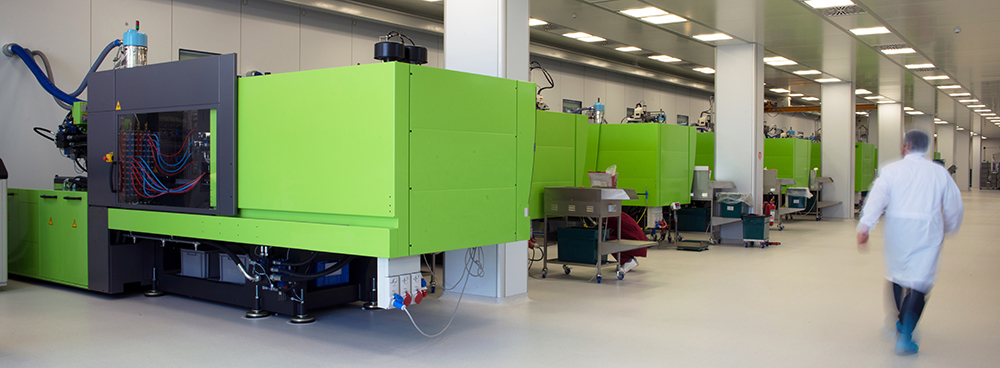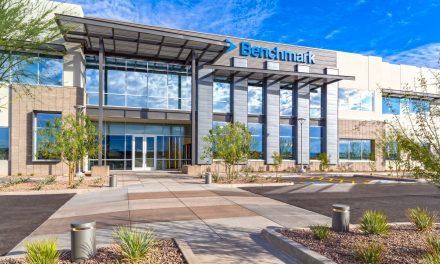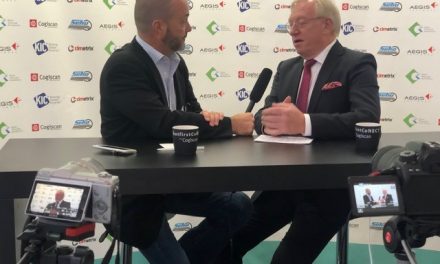Sometimes It’s All About the Numbers: Additive Manufacturing Breaks Out

By Rush LaSelle, Senior Director, Business Development, Jabil
Also published on Jabil’s blog
When it comes to the manufacturing of industrial equipment, white goods and medical diagnostic equipment, many projects don’t get off the drawing board because the expected sales volume is not sufficient to justify the cost of tooling and other non-recurring costs related to bringing a product to market.
This is where Additive Manufacturing is turning things on its head. Previously there was a chasm between low volume prototyping and volume manufacturing. The cost of crossing that chasm was tools which cost tens of thousands of dollars and, of course, time.
Previously, Additive Manufacturing only really made sense at low volumes. But over recent years there has been a dramatic shift in the tool sets that are available, moving break-even points from hundreds (or low thousands) of units to tens of thousands of units. It is now practical to produce parts at 20,000 to 40,000 units at/or below costs attributed to traditional manufacturing processes. This starts to open the door to applications in industries where up-front tooling costs have been a real constraint.
Another key issue for these kind of products – whether it be copiers, printers, white goods or medical equipment — is the desire, and often need, for faster speed to market. In fact, in the white goods space companies regularly want to produce an early beta product, and not have to amortize tooling to produce it in volumes of 5,000 or 10,000. They’d prefer to get a user group 500 of these appliances, whether it be a washer, dryer or oven. Digital and Additive technology shift the cost curve enough to enable these types of activities.
Additive Manufacturing allows brands to get a sample product out into a test market within a matter of weeks, as opposed to the normal six to 12 months required to work through the tooling cycles. It’s not only the time to get the first article out, but also the ability to iterate long before a product ever gets to the big box stores that brings tremendous value.
The economics of Additive Manufacturing have changed rapidly in recent years, and this change is creating a new freedom to produce in smaller volumes. This might mean a unique model for a specific market. It could also mean that a medical diagnosis device makes it off the drawing board when previous mold and tooling economics precluded viability, preventing it from reaching people in need.
Additive Manufacturing offers another freedom. Once the shackles of tooling and traditional manufacturing techniques are removed, designers can enjoy a new freedom that only DfAM (Design for Additive Manufacturing) offers. This is the ability to design without constraints, such as draft angles for injection molding and with complex multi-material assemblies that can be printed rather than assembled. Removing these constraints offers new horizons for industrial designers where they can focus on form and function and not on production technologies. This already is resulting in parts consolidation, reducing the Bill of Materials (BOM) and improving the economics of the ultimate solution.
Another challenge facing these products is the protracted supply chains that exist over multiple geographies. Additive Manufacturing can enable supply chain consolidation. By storing inventory in the form of raw materials and digital files, vast warehouses of inventory can be dramatically reduced. The mantra of “ship data, not parts” is as true in these sectors as it is anywhere else.
We have begun to see digital inventories have a profound impact on how companies are thinking about their spare parts and maintenance-repair-and-obsolescence (MRO) strategies. Smaller production volumes can create problems in aftermarket support with the deployment of spare parts being a major challenge. Variation of too many spare parts in multiple geographies can be prohibitive and can create major friction in product support, which creates challenges for brand loyalty. Additive Manufacturing can help with locally deployed production and raw material storage, because manufacturing a spare part close to the location where it is needed becomes as efficient as sending a file to a printer.
Lastly, Additive Manufacturing enables distributed production, often closer to the user. This is good for the supply chain, good for the brand, good for the user and, of course, good for the environment. Additive Manufacturing is likely to change the way we think about the distribution of production. Our focus on larger factories in low-cost environments is giving way to developing a more distributed production solution closer to consumption.
Additive Manufacturing is changing the way things are made. It is also changing the way we ideate products and how we decide what will and will not make it into the market. Additive Manufacturing has shifted the economics of production considerably, opened new design opportunities, and improved supply chain and aftermarket dynamics. Additive technology will change manufacturing in the same way the PC changed the finance industry, and Jabil is on the cutting edge driving the innovation that will accelerate that growth.
Rush LaSelle is a global business leader with over 20 years of experience in high-growth markets including robotics, autonomous vehicles, digital manufacturing & automation, and most recently additive manufacturing and 3D printing; holding formal degrees in engineering, marketing, and finance.













